The black part is the insulation, brown part is copper. How can I calculate the capacitance between the two small copper cables? There are 3 conductors, 2 of them inside the big conductor
-
1What am I looking at? At first I thought it was the bottom of a capacitor. But you're saying it's a "cable". If the brown is copper, does that mean there are 3 conductors in the cable, two of which are contained within the larger one? – Bort Dec 24 '20 at 21:12
-
@Bort yes exactly – electrococuk Dec 24 '20 at 21:26
-
@ElliotAlderson no I am trying to calculate the capacitance between them. But I don't know how to start. Is there a specific formula for this kind of cable? – electrococuk Dec 24 '20 at 21:30
-
It would help if you provided all of the relevant dimensions...diameters of the conductors and thickness of the insulators. – Elliot Alderson Dec 24 '20 at 21:32
-
Why would you post the same question twice? Are you two questions about something different? – Bort Dec 24 '20 at 21:32
-
@ElliotAlderson I am just looking for the formula really – electrococuk Dec 24 '20 at 21:33
-
You should do an internet search for "capacitance coaxial conductor". Each of the two smaller conductors is essentially a cylinder inside a tube. – Elliot Alderson Dec 24 '20 at 21:40
-
@ElliotAlderson could I assume that they are just two coax cables laying side by side? – electrococuk Dec 24 '20 at 21:45
-
[Earlier related question](https://electronics.stackexchange.com/questions/532354/calculating-capacitance-of-a-cable) – Andy aka Dec 25 '20 at 10:14
1 Answers
Assuming the insulating material surrounding the smaller conductor is of uniform thickness, the capacitance per unit length between the large copper conductor an either of the small copper conductors is:
\$C_{large-small} = \frac{\displaystyle 2\pi\epsilon}{\displaystyle \ln(b/a)}\$
where
\$a\$ is the outside diameter of the smaller conductor
\$b\$ is the inside diameter of the cavity in which the smaller conductor and insulator reside
\$\epsilon\$ is the permittivity of the insulating material between the smaller and larger conductor.
The capacitance per unit length between the two smaller conductors is found by calculating the capacitance of two of these capacitances in series, which is one half of the figure above.
\$C_{small-small} = \frac{1}{2}C_{large-small}\$
or
\$C_{small-small} = \frac{\displaystyle \pi\epsilon}{\displaystyle \ln(b/a)}\$
- 18,947
- 3
- 19
- 65
-
Yeah, they do appear to be somewhat off. I'm guessing, perhaps incorrectly, that the intent was that the insulation is uniform, and the off-centeredness is an artifact of the art work. @electrococuk what do you say? Edit: Added my assumption to the answer, for clarity. – Math Keeps Me Busy Dec 25 '20 at 00:57
